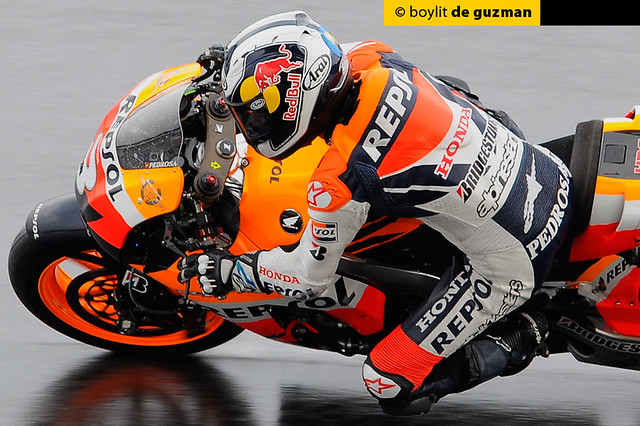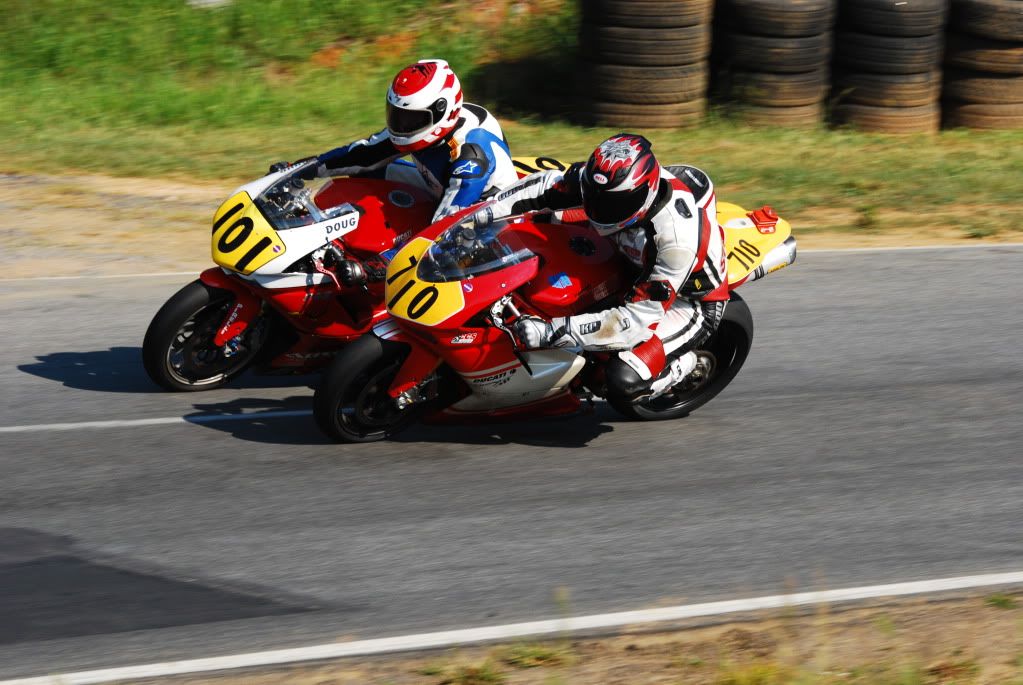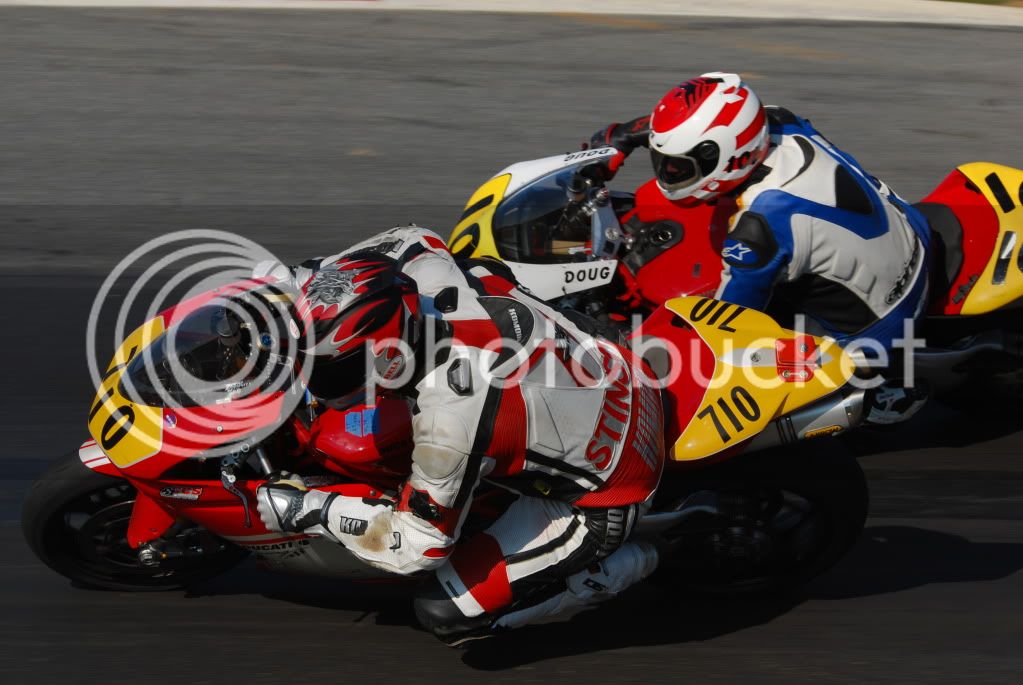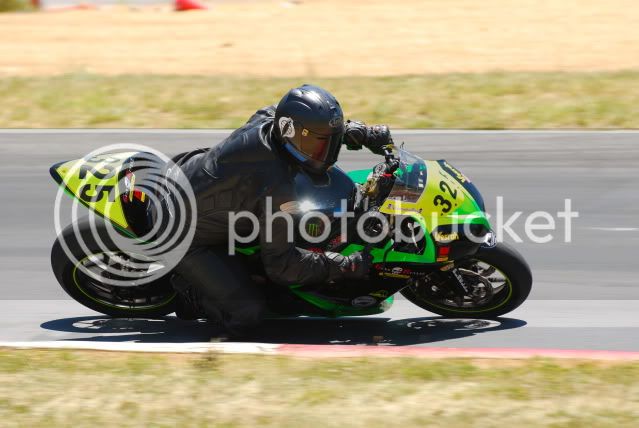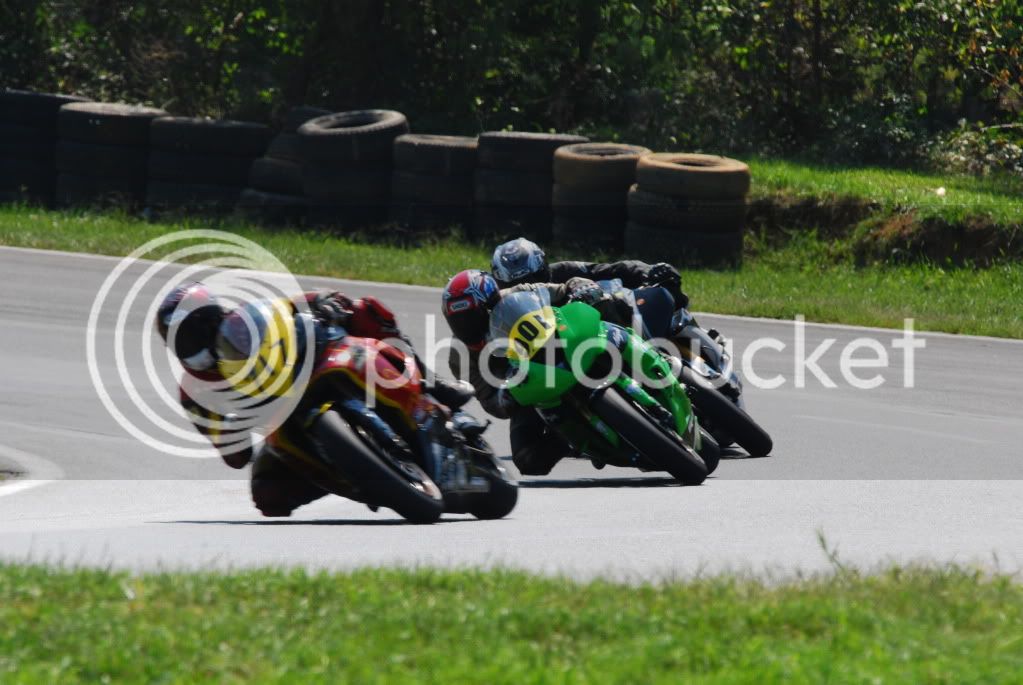this is a pure photography post so unless you're a shutterbug, move along before you fall asleep
A month ago, I finally sprung for a decent DSLR. I've been picking up the ABCs of real photography and have had some decent amateur results shooting landscapes and outdoor stills.
Next Saturday is a track day. When not in a riding session, I'd like to walk-out to some of the tighter curves (bikes moving slower / knees a' dragging) and capture some cool close-up action
My camera won't be the bottleneck and I have a great fast telephoto. If I come home empty-handed, it will be my doing.
- Nikon D90 (I originally bought a D5000 but upgraded to the D90)
- 18-105mm f/3.5-5.6G ED VR
- 70-200mm f/2.8G IF-ED VR (this is a pro lens that I rented for a month. It kicks ass)
- 35mm f/1.8G
- a decent tripod
- remote shutter release (D90 won't shoot in burst mode with the remote)
So I'm thinking of setting up the tripod fairly close to the track with the 70-200. If it's a sunny day and I have that fast telephoto, I'm thinking ISO 200, adjust white balance for cloudy / sunny.... so far so good (or is it?). With that lens, I'm thinking of trying aperture priority with a big aperture (f/2.8 - 4) to soften the foreground / background and I assume the D90 will pick suitably high shutter speeds.
As a complete noob with real cameras, I have no ego to burst so if I'm way-off, please advise. It would just suck to come home with a bunch of crappy images.
thanks in advance
PS: a big thanks to forum member Nik Hisham in Malaysia for tips on on-bike photography prior to my ride around the maritime provinces. I ended-up just sticking on a little gopro hero for the onbike shots.
A month ago, I finally sprung for a decent DSLR. I've been picking up the ABCs of real photography and have had some decent amateur results shooting landscapes and outdoor stills.
Next Saturday is a track day. When not in a riding session, I'd like to walk-out to some of the tighter curves (bikes moving slower / knees a' dragging) and capture some cool close-up action
My camera won't be the bottleneck and I have a great fast telephoto. If I come home empty-handed, it will be my doing.
- Nikon D90 (I originally bought a D5000 but upgraded to the D90)
- 18-105mm f/3.5-5.6G ED VR
- 70-200mm f/2.8G IF-ED VR (this is a pro lens that I rented for a month. It kicks ass)
- 35mm f/1.8G
- a decent tripod
- remote shutter release (D90 won't shoot in burst mode with the remote)
So I'm thinking of setting up the tripod fairly close to the track with the 70-200. If it's a sunny day and I have that fast telephoto, I'm thinking ISO 200, adjust white balance for cloudy / sunny.... so far so good (or is it?). With that lens, I'm thinking of trying aperture priority with a big aperture (f/2.8 - 4) to soften the foreground / background and I assume the D90 will pick suitably high shutter speeds.
As a complete noob with real cameras, I have no ego to burst so if I'm way-off, please advise. It would just suck to come home with a bunch of crappy images.
thanks in advance
PS: a big thanks to forum member Nik Hisham in Malaysia for tips on on-bike photography prior to my ride around the maritime provinces. I ended-up just sticking on a little gopro hero for the onbike shots.




















































